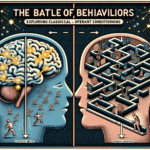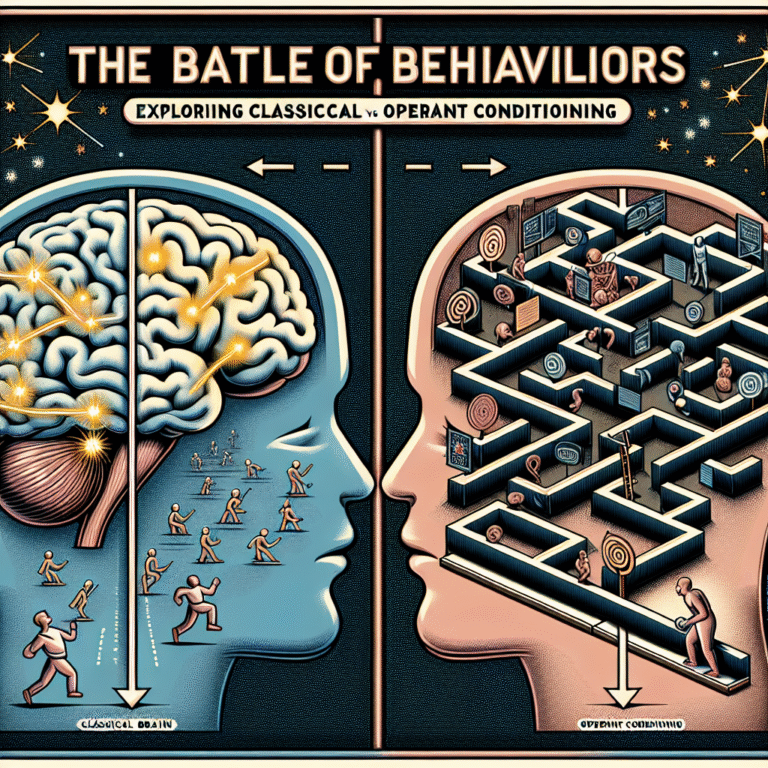
Introduction
Victims of crime have historically been marginalized, often viewed primarily as statistics or collateral damage in the broader narrative of crime and justice. However, the landscape of victimology is shifting. As our society becomes more aware of the complexities surrounding victimization—ranging from mental health implications to socio-economic factors—the need for comprehensive research, advocacy, and policy changes has never been more apparent. This article explores The Future of Victimology: Research, Advocacy, and Policy Changes, guiding us through the evolving role of victimology in shaping a more just society.
Understanding Victimology
What is Victimology?
Victimology is the study of victims and the patterns of how they experience crime. It examines the psychological, sociological, and legal aspects of victimization, recognizing victims as active participants in their narratives rather than passive entities. In recent years, victimology has emerged as a critical component of criminal justice studies, prompting scholars and policymakers alike to reconsider long-held perceptions of crime and its victims.
Historical Context
The roots of victimology can be traced back to the early 20th century, but it gained traction during the latter half of the century, particularly in response to the civil rights movement. The crime-victim relationship began to be scrutinized more closely, illuminating issues of power dynamics, social inequality, and societal neglect. Understanding this historical framework is vital as we consider The Future of Victimology: Research, Advocacy, and Policy Changes.
Emerging Trends in Research
Expanding Scope of Victimology
Victimology is no longer confined to a narrow definition of crime victims. It now embraces various forms of victimization, including domestic violence, human trafficking, and cybercrime. Sophisticated methodologies, including qualitative interviews and digital forensics, are unveiling new dimensions of victim experiences and fostering deeper insights.
Case Study: The Impact of Cyberbullying
In the age of social media, cyberbullying has emerged as a pressing concern. Research into the psychological effects on victims—like anxiety, depression, and isolation—highlights the need for targeted interventions. A study conducted by the Cyberbullying Research Center found that nearly 34% of students experienced cyberbullying, showing a direct correlation to mental health issues. Such empirical data underscores the necessity of broadening our research scope in victimology, informing advocacy and policy changes.
Utilizing Big Data and Technology
The role of technology in victimology is expanding. Big Data analytics can illuminate patterns of victimization, leading to proactive measures in crime prevention. Technological advancements also present unique opportunities for engaging with victims more directly.
Table: Big Data in Victimology Research
| Technology | Application in Victimology |
|---|---|
| Social Media Analysis | Tracking patterns of cyberbullying and harassment |
| Geographic Information Systems (GIS) | Mapping crime hotspots to assist victims |
| Sentiment Analysis | Understanding public perception of victim support systems |
Advocacy: Championing the Victim’s Voice
The Role of Advocacy Organizations
Advocacy groups play a pivotal role in integrating victim perspectives into public policy. These organizations provide resources, educate communities, and often act as a bridge between victims and the legal system. They underscore the importance of recognizing victims not just as passive players but as stakeholders in the justice process.
Successful Advocacy Campaigns
One notable example is the push for "victim impact statements" in courtrooms. These statements allow victims to express how crimes have affected their lives, ensuring their voices are heard during sentencing and parole decisions. This campaign has prompted legislative changes in numerous states to formalize the rights of victims within the criminal justice system.
Policy Changes: Shaping the Legal Landscape
Evolving Legal Frameworks
In response to the advocacy efforts and new research, legal frameworks are beginning to change. Policies centered on victim rights and services are increasingly being implemented at various levels of government. These changes range from legislative measures aimed at supporting victims to the establishment of victim compensation funds.
Case Study: The Crime Victims’ Rights Act
In the United States, the Crime Victims’ Rights Act (CVRA) was a significant shift in recognizing victims’ rights. Enacted in 2004, the CVRA established several key rights for victims, including the right to be reasonably protected from the accused and to be treated with fairness and respect. Evaluations of the CVRA show enhanced satisfaction among victims regarding their treatment in judicial proceedings.
International Perspectives
Globally, countries are adopting similar measures, illustrating a trend toward recognizing the rights of victims on a wider scale. The European Union’s Directive on Victims’ Rights aims to improve the protection and support of victims across member states—a paradigm shift that emphasizes a victim-centered approach to justice.
A Holistic Approach to Victimology
Intersectionality in Research
Understanding the intersectionality of victimization—where race, gender, sexual orientation, and socio-economic status converge—can provide nuanced insights into victim experiences. Incorporating diverse perspectives is essential to addressing the needs of all victims effectively.
Case Study: LGBTQ+ Victimization
Research shows that LGBTQ+ individuals face disproportionately higher rates of victimization, notably hate crimes. A study by the FBI revealed that LGBTQ+ individuals constituted a significant percentage of hate crime victims in the U.S. This highlights the urgent need for tailored support services and awareness initiatives tailored for diverse victim groups, underscoring the focus on The Future of Victimology: Research, Advocacy, and Policy Changes.
Collaborative Efforts and Community-Based Solutions
Community engagement through restorative justice programs illustrates a forward-thinking approach to victimology. These initiatives prioritize healing and resolution, often involving victims, offenders, and community members in dialogue.
Table: Community-Based Initiatives
| Initiative | Description |
|---|---|
| Restorative Justice | Focus on reconciliation between victims and offenders |
| Victim Support Groups | Peer support and resource sharing for victims |
| Community Awareness Campaigns | Education on victim rights and resources |
Challenges Ahead for Victimology
Socioeconomic Barriers
Despite strides in research and advocacy, significant barriers remain for many victims—especially those from marginalized communities. Socioeconomic status often dictates accessibility to resources like legal representation and mental health services, creating disparities in how victims experience the justice system.
The Stigma of Victimhood
Cultural stigmas surrounding victimization can discourage individuals from seeking help or reporting crimes. Understanding the psychological implications of this stigma is crucial for the future of victim advocacy and support structures.
Conclusion
The landscape of victimology is rapidly evolving. As we look toward The Future of Victimology: Research, Advocacy, and Policy Changes, a paradigm shift is necessary to further integrate victims’ voices into the justice system. Embracing comprehensive research, fostering robust advocacy, and enacting meaningful policy changes will create a more inclusive narrative—one that recognizes and values the experiences of victims.
Key Takeaways
- Victimology is expanding to encompass a myriad of victim experiences, requiring focused research efforts.
- Advocacy organizations are crucial in integrating victim perspectives into legislation and social awareness.
- Policy changes must adapt to reflect changing societal perceptions and needs of victims, reinforcing their rights and supports.
- Intersectionality and community-based solutions will play a vital role in addressing the complexities of victimization.
FAQs
1. What is the primary focus of victimology today?
Victimology today focuses on understanding the diverse experiences of victims, examining how social, cultural, and economic factors influence victimization, and advocating for policies that enhance victim support and rights.
2. How can research in victimology improve support systems for victims?
Research in victimology provides empirical data that informs advocacy and policy decisions, highlights the unique needs of different victim groups, and supports the development of targeted interventions and resources.
3. What are some common forms of victimization?
Common forms of victimization include physical assault, sexual violence, domestic abuse, human trafficking, cyberbullying, and hate crimes, among others.
4. How can individuals get involved in victim advocacy?
Individuals can get involved by joining advocacy organizations, participating in awareness campaigns, volunteering at shelters, and supporting legislative efforts that prioritize victim rights.
5. What barriers do victims face in seeking justice?
Victims often face barriers such as a lack of resources, societal stigma, knowledge gaps about their rights, and inadequate support services, particularly from marginalized backgrounds.
In embracing these challenges and opportunities, we can ensure that The Future of Victimology: Research, Advocacy, and Policy Changes paves the way for a more compassionate and just society.


















